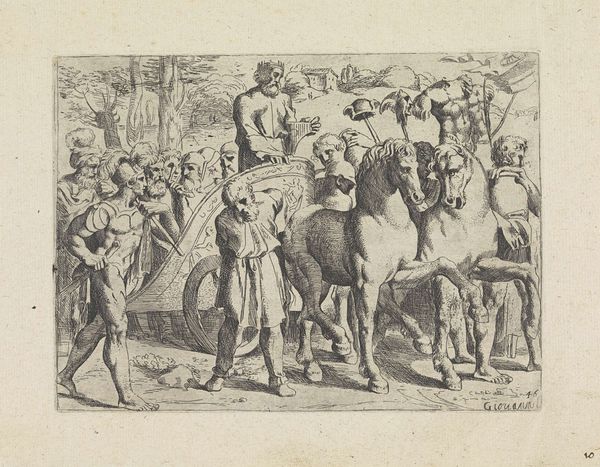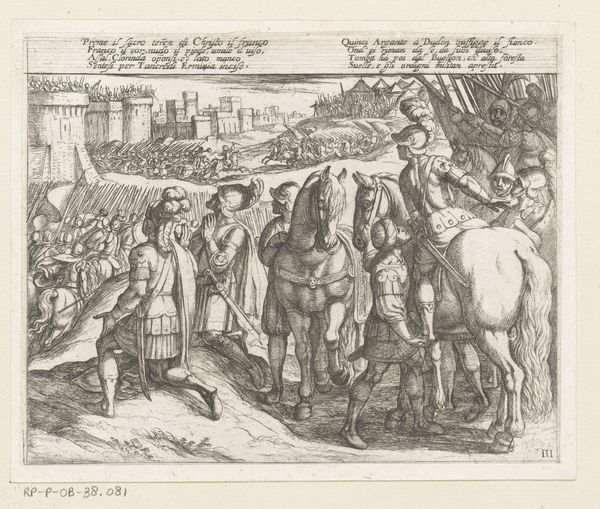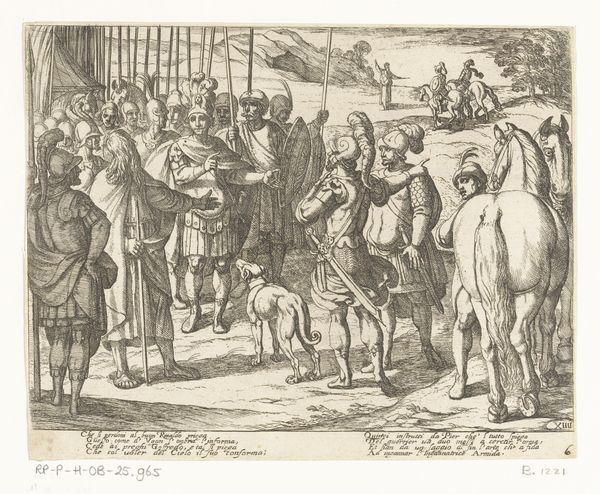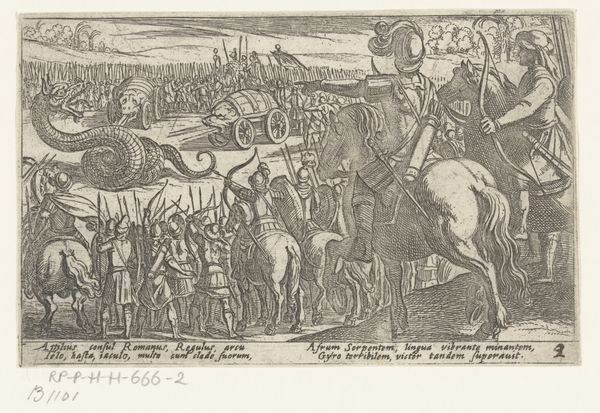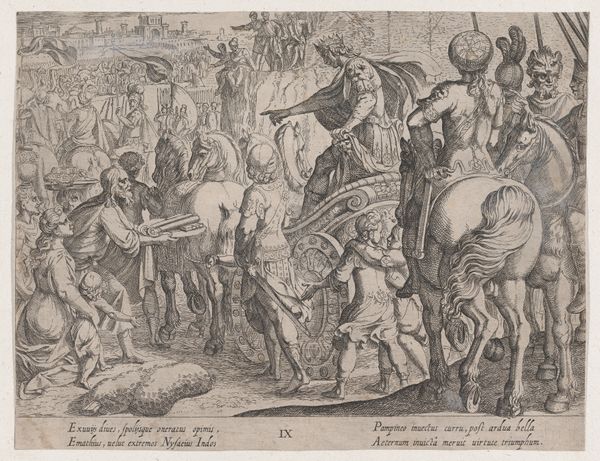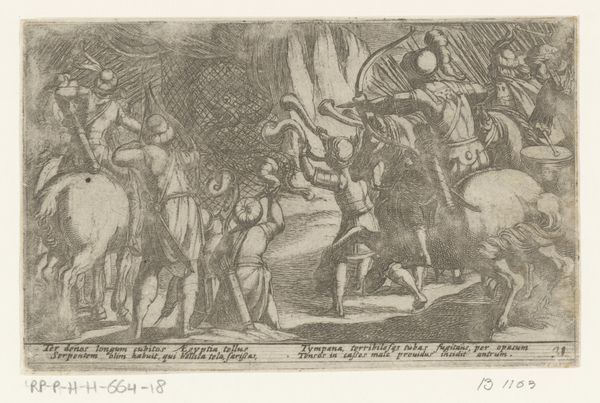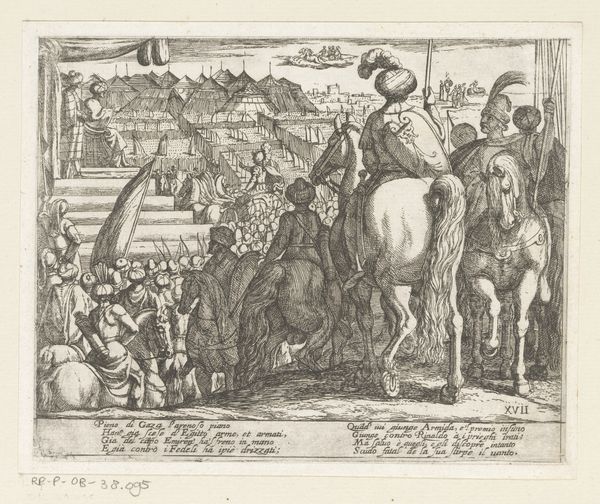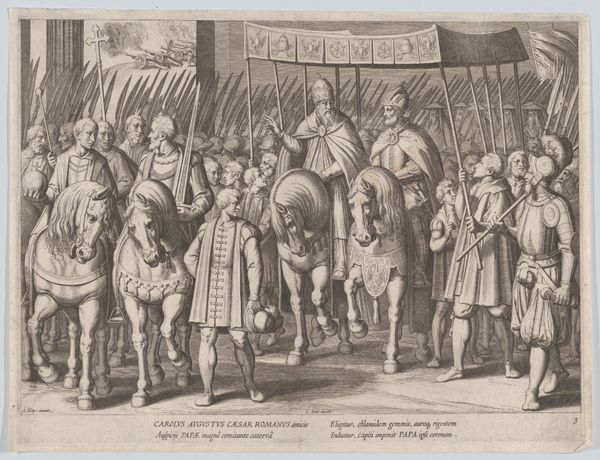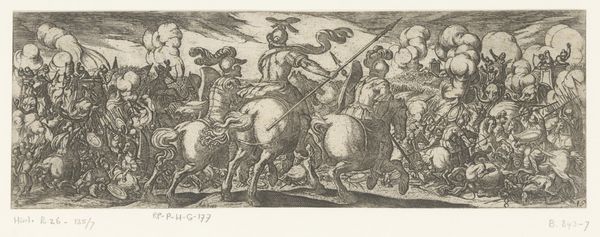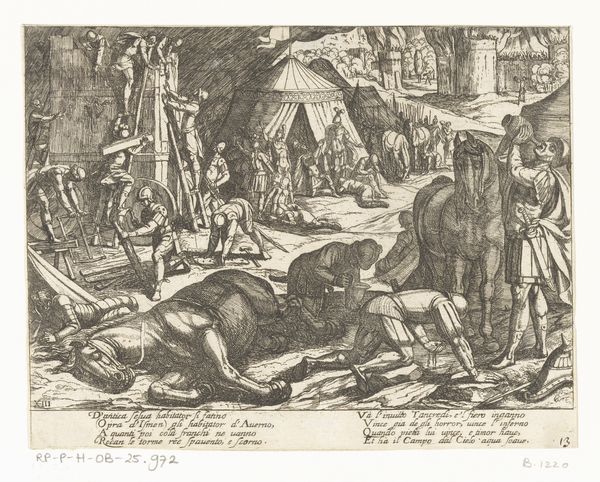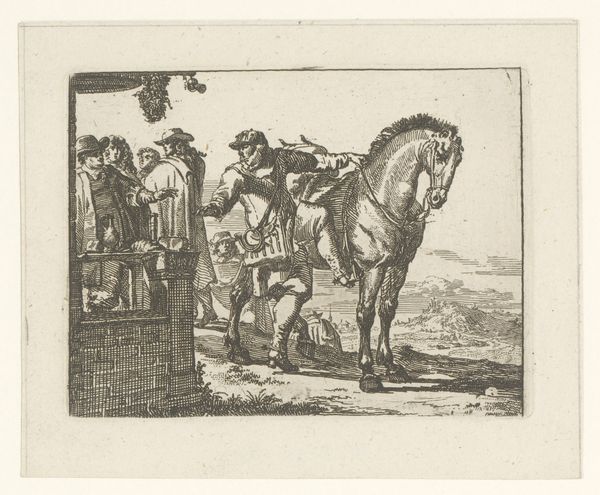
Illustratie bij Canto I van Tasso's 'Gerusalemme Liberata' 1565 - 1630
0:00
0:00
antoniotempesta
Rijksmuseum
drawing, print, ink, engraving
#
portrait
#
drawing
#
comic strip sketch
#
narrative-art
#
mechanical pen drawing
# print
#
pen illustration
#
pen sketch
#
classical-realism
#
mannerism
#
figuration
#
personal sketchbook
#
ink
#
sketchwork
#
pen-ink sketch
#
line
#
pen work
#
sketchbook drawing
#
history-painting
#
storyboard and sketchbook work
#
academic-art
#
italian-renaissance
#
engraving
Dimensions: height 145 mm, width 183 mm
Copyright: Rijks Museum: Open Domain
Antonio Tempesta etched this illustration for Canto I of Tasso's 'Gerusalemme Liberata'. Note the dominant presence of the mounted knight, a figure laden with historical weight. The horse itself is a potent symbol – strength, nobility, and untamed power. This image, recalling the Roman equestrian statues of emperors, speaks of dominion and authority. The knight's raised hand, a gesture of command, is a visual echo of the classical orator, directing not just the army but also the viewer's gaze. Such gestures and symbols recur throughout art history. Consider how similar motifs have been employed in propaganda, religious art, and even contemporary advertising, shifting in meaning, yet always tapping into our primal understanding of power. It's a collective memory, stirring subconscious associations. The artist uses the human body and these recurring motifs as a powerful tool, engaging us on a deep, emotional level. Observe this evolution. It demonstrates that images and their meanings are not fixed but rather fluid, ever-changing in our minds.
Comments
No comments
Be the first to comment and join the conversation on the ultimate creative platform.

